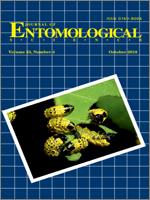Life history evolution involves a series of trade-offs to maximize reproductive success at the expense of other physiological systems. Within insects, increased body size is associated with increased fecundity in males and females alike; hence, increased body size should be favored even if it is detrimental in the short term. The righting response is a reflexive mechanism used by individuals to regain proper dorsoventral orientation and is conserved among terrestrial animals of multiple taxa to avoid the consequences of being helpless on one's back. In this study, we examined the righting response as it related to body size in the cinereous cockroach, Nauphoeta cinerea (Olivier), of both sexes and found that larger individuals were slower to right themselves relative to smaller individuals. Moreover, the reproductive history of the individual at testing differentially affected this relationship in a sex-specific manner. Individual females that were presumed mated at the time of testing were slower to right themselves than were same-sized males, while virgin females righted themselves more quickly. Taken together, these findings suggest that the reproductive gains associated with an increased body size within this species come at the expense of righting ability and that this outcome is compounded by reproductive history.
How to translate text using browser tools
1 October 2018
Body Size and the Righting Response: A Cost of Reproductive Success in Nauphoeta cinerea (Blattodea: Blaberidae)?
James M. Harper
ACCESS THE FULL ARTICLE
body size
cinereous cockroaches
life history
Nauphoeta cinerea
righting response





